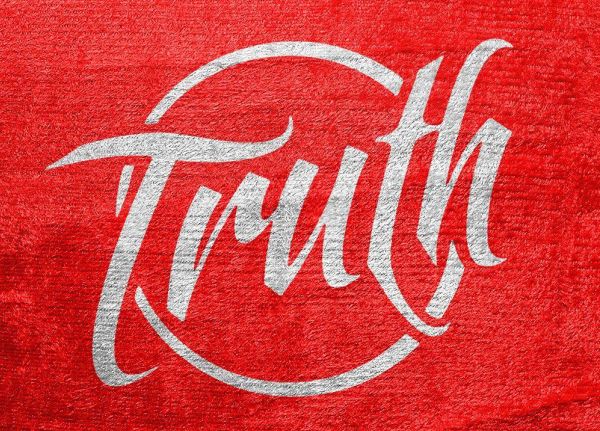With the dawn of the Age of Intellectual Capital during the mid 1990’s, came the realization that a majority of the value of a modern enterprise can be located in the intangible assets and not in the traditional tangible assets such as real estate, plant, equipment, inventory, cash, and the like.
Stockholders sometimes recognize the Intangible Assets of some companies by giving it a higher price-to-earnings ratio than average. This reflects a greater degree of faith by investors in what the expected future value of the stock will be…based upon trends, leadership, brand image, product quality, communications, organizational culture, innovation, intellectual property, managements adaptability to changing market conditions and its vision in wisely allocating capital to maximize future returns.
Behold The Intangibles
To understand the importance of these intangible factors, we need only to look at the market capitalization of many of today’s most successful corporations, or at the prices paid well beyond conventional assets in recent mergers and acquisitions.
Consider Apple, Inc. at the end of its 2015 fiscal year, which ended this past September. With a market capitalization of $665 billion, Apple reported revenues for the trailing twelve months of $234 billion. If we check its balance sheet, and add its stated tangible assets of $290 billion to its annual revenues, we are still left with about $141 billion worth of market cap of unspecified value.
What accounts for this $141 billion? Financial experts agree this represents Apple’s intangible assets which is a combination of Intellectual Capital, Brand Equity and (Investor & Consumer) Goodwill. These days, using this simple financial formula to assess the S&P 500, the average value of intangible assets are worth about half of these large corporations market cap. It’s interesting to note that by using this simple simple formula intangible assets for Apple in 2014 were $280 billion or almost twice the value of the 2015 calculation. By this calculation and comparison Apple has lost 50% of its Intangible Value within the past 12 months. This reveals the limits of the simple intangible value calculation. What this shift demonstrates in Apple’s case is that management has re-allocated some of the capital of the firm into tangible assets. They’ve made major investments in cloud services, iWatch, iPhone, their new corporate headquarters and other areas. These investments are crucial to keeping the growth and momentum of the company going.
While brand equity is strategically crucial, it has been famously difficult to quantify. Many experts have developed tools to analyze it, but there is still today no agreed upon single way to measure it, and at least seven alternatives are widely in use, these include the Aaker Model; the Moran Model; the Young & Rubicam Model; the Interbrand Model; the CoreBrand Model, the Brand Finance model and Millward Brown’s BrandZ model of the 100 Most Powerful Brands in 2015, of which Apple is #1.
One of the challenges that branding professionals have is in measuring the difference between quantitative and qualitative equity values. Quantitative calculations include numerical values such as net sales, profit margin and market share, but fail to capture the qualitative elements of brand strength such as the prestige value of key brand associations, personalities or resonant advertising taglines that have become social memes.
But, regardless of the model used, the brand value calculation challenge points to the fact that intangible qualities in marketing do result in the creation of significant tangible qualities on the balance sheet, they influence the expected future value of the company with investors and they influence sales momentum with consumers.
Brands Occupy The Center Of Value
Considering the importance of branding in this light, we can see why “the Brand” has moved to the center of corporate strategy discussions. Increasingly, it has become the most valuable asset outside of people in the enterprise. Like Apple, all brands possess an identity value that is subject to expected future value calculations based on corporate news, business model innovations, new products and the power of its communications in shaping its total value proposition in the marketplace.
Whether it is “merely” the name of the enterprise, a product, a service, a house mark, a sub-brand or human persona we are all operating under an identity. As a management team begins to realize the significance of the role of the brand, which until recently many thought was at best, the concern of the VP of Marketing, now understood as Brand Equity and how it contributes to Shareholder Equity, the brand has become the ongoing concern of the CEO and the entire executive team.
Steve Jobs had a sense of this when he returned to Apple in 1997 and directed the company in the creation of a deep campaign that revitalized Apple’s core brand values. At this time Steve became aware that people didn’t know what Apple really stood for anymore. Steve recognized that he needed to re-anchor Apple’s core brand values in a way that positioned Apple very differently in the technology marketplace than any other brand. Steve understood that what Apple needed in that moment was more heart and soul. He knew this was possible studying the deep campaigns of other companies particularly Nike. So he set in motion a showdown between ad agencies to help find the right positioning concept and brand message. The outcomes of those efforts propelled the brand well beyond the iconic Think Different campaign to a place of undisputed value.
Ushering in an age where every CEO and stakeholder has a responsibility to build and protect brand equity. No excuses.
These core ideas and others can be found in Soulful Branding – Unlock The Hidden Energy in Your Company & Brand, Jerome Conlon, Moses Ma & Langdon Morris. This book presents a deep paradigm shift in what the art of marketing & branding can become at the highest level.
The Blake Project Can Help: Discover Your Competitive Advantage With Brand Equity Measurement
Branding Strategy Insider is a service of The Blake Project: A strategic brand consultancy specializing in Brand Research, Brand Strategy, Brand Growth and Brand Education




